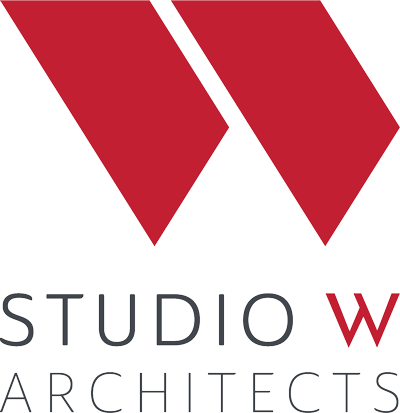In 2018, when a fire ripped through Paradise, it quickly went from what some thought would be another California wildfire to the deadliest and most destructive wildfire in the state’s history. In terms of insured losses, it was also the most expensive natural disaster in the world that year.
I remember it all too well. Our team at Studio W Architects, formerly BCA Architects, had just finished a master plan with Paradise Unified School District, which we had started in 2017. We did a full conditions assessment and, in November 2018, two days after a bond measure passed that would allow our firm and the school district to get to work, the Camp Fire came through, ruining 50% of the district’s schools. It was devastating, but it was also an opportunity to get the facilities that the school district really needed. So we started over.
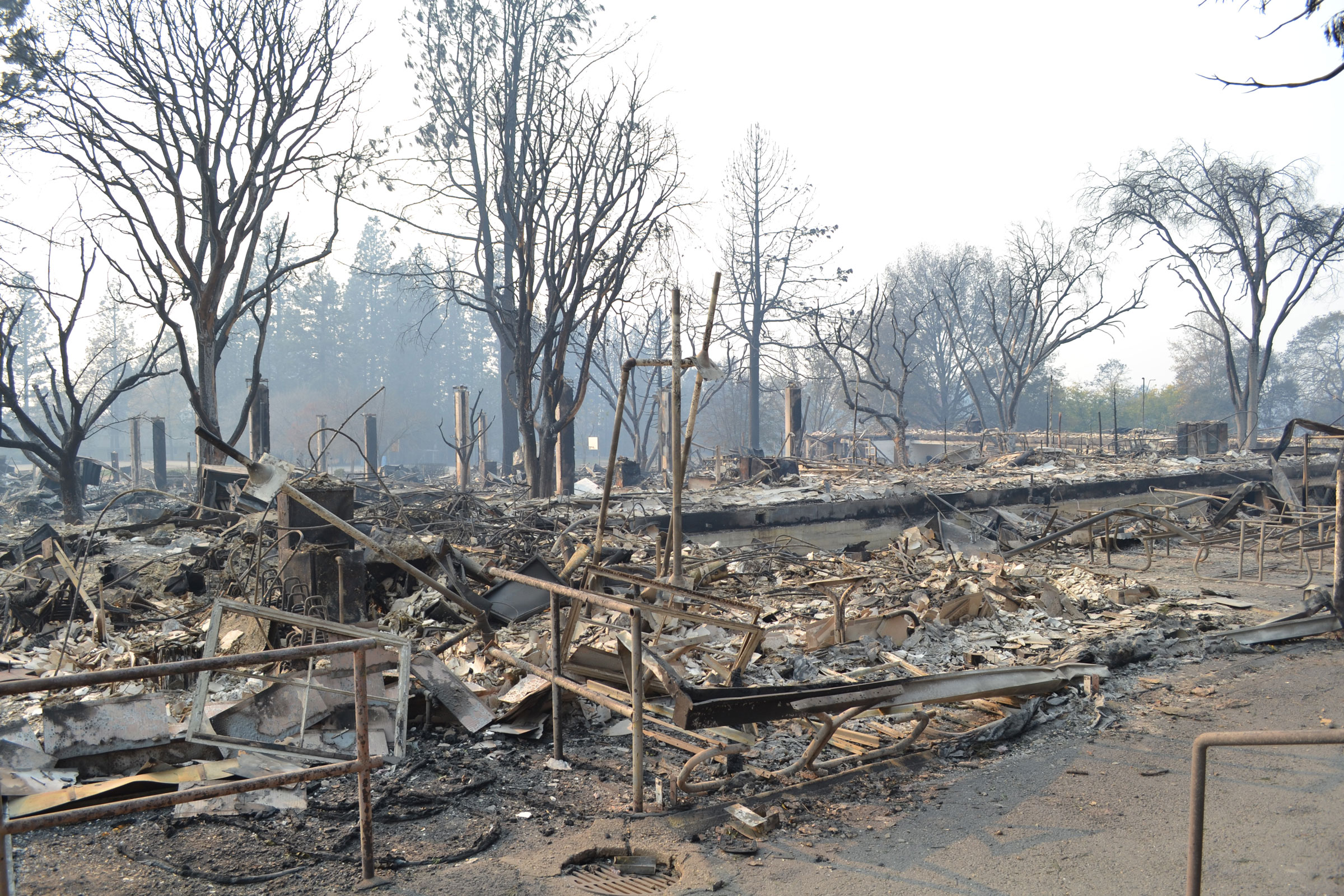
The remnants of Paradise Elementary School after the Camp Fire. Photo courtesy of Studio W Architects
Who is Studio W Architects?
Studio W Architects’ focus is on educational design, and we do that throughout California, from K-12 to higher education and specialty environments–you name it. We have 30 people total on staff, and at any given time half of our staff is working on Paradise Unified School District projects.
What separates us from some of our competitors is that we operate like a program manager and an advocate for our districts. We don’t only develop the design; we manage their entire program, financially and otherwise.
What is a Conditions Assessment?
Studio W was initially hired in 2017 to complete a conditions assessment and develop a master plan to assist Paradise Unified School District in passing a general obligation bond measure that would go to voters in November of 2018. We went through the facilities assessments, set the conditions of all of their sites–architecturally, structurally, electrically, mechanically, and so forth–and developed a list of project needs and prioritized projects based on the funding at that moment. The district wanted to increase, enhance, and improve the physical condition of their schools.
In a needs assessment we analyze the condition of a facility in terms of its age, design, construction methods, and materials. We would encourage every school district to go through this process, just like what we did with Paradise before the fire, so they have an up-to-date assessment. Having allowed Paradise Unified School District to know exactly what they had and how they might rebuild after the disaster. Having a master plan already drawn up saved them a lot of time because a lot of their priorities did not change even after the fire; they still wanted enhanced education facilities and modernized athletics, for example.

Damage to the Paradise Unified School District facilities from the Camp Fire. Photo courtesy of Studio W Architects
What Did Studio W Do for Paradise Unified School District?
We came in and developed a master plan; managed all of their expenses, both from a hard construction standpoint and soft cost standpoint; and recognized when, for example, insurance proceeds don’t provide enough coverage on soft costs.
With Paradise Unified School District we came in and argued that the value of some of these buildings, particularly if we had to bring them up to code, would be even stronger. Our services go “beyond design.” We helped Paradise Unified School District secure funds, we helped them spend those funds in an efficient manner, we assisted them in the selection of their contractors, and we assisted them in all of their special testing and environmental quality pieces.
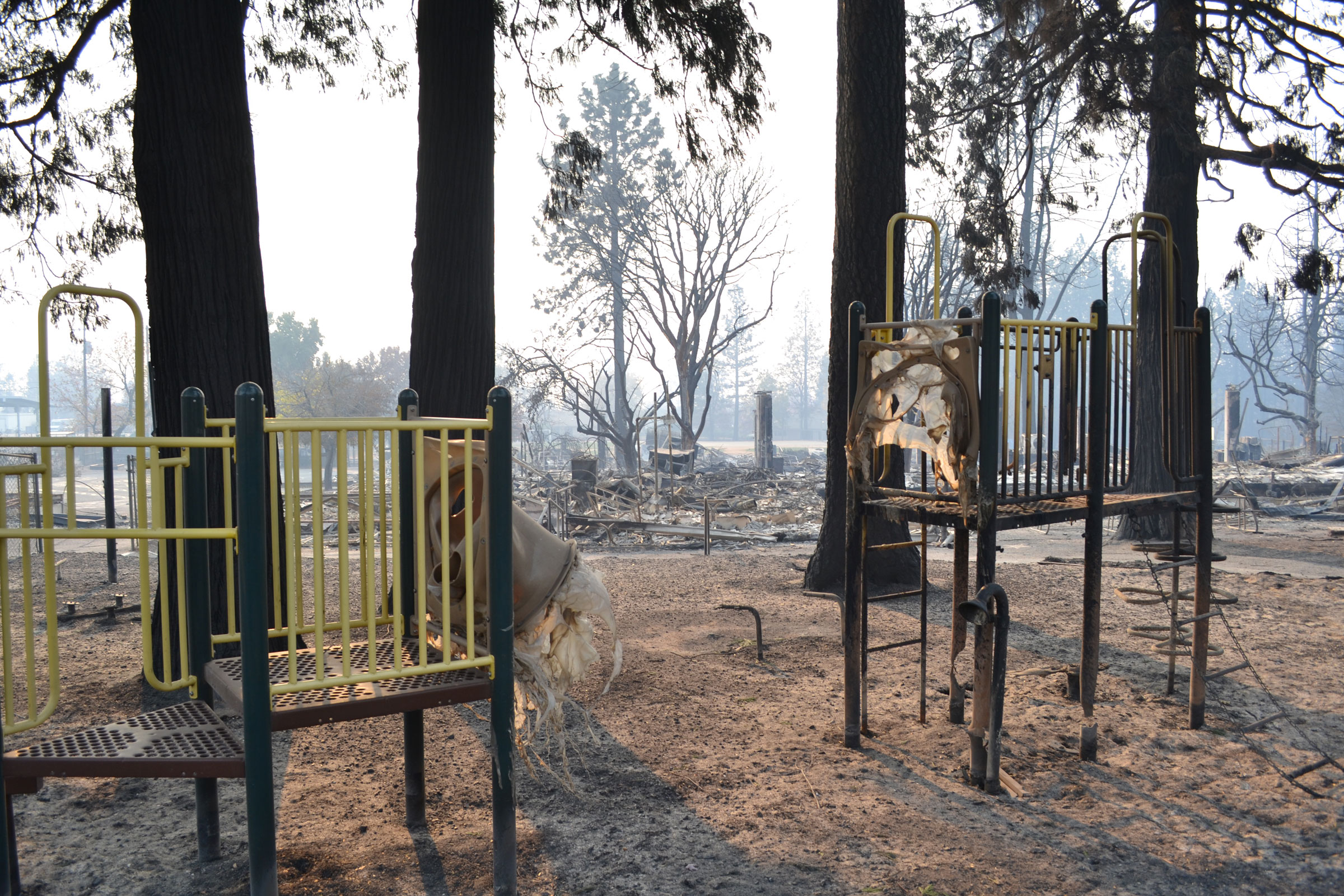
Damage to a Paradise Unified School District playground from the Camp Fire. Photo courtesy of Studio W Architects
After the fire, the biggest issue for the district was that bond measures are based on assessed property values, so immediately the assessed property values were diminished considerably. So not only were they unable to access the funds of the bond right away like they would have been able to, but they had tremendously more need. They lost approximately 50% of their teaching spaces district-wide.
We surveyed the damage and spent the next year-and-a-half revising the plan. Our assessment gave us a good idea of how much loss they incurred, how many spaces and what square footage was lost, and the value.
We then developed a relationship with the district’s insurance provider to figure out how to get compensated for the cost and where we could then apply that compensation to get us back to serving students. It took four or five months, but we were hired back to represent the school district in their insurance negotiations. And it helped because we had photos of all of the facilities in pre-disaster condition—photos of all of the interiors and exteriors of all of the sites. We ultimately helped Paradise negotiate $57 million in insurance proceeds.
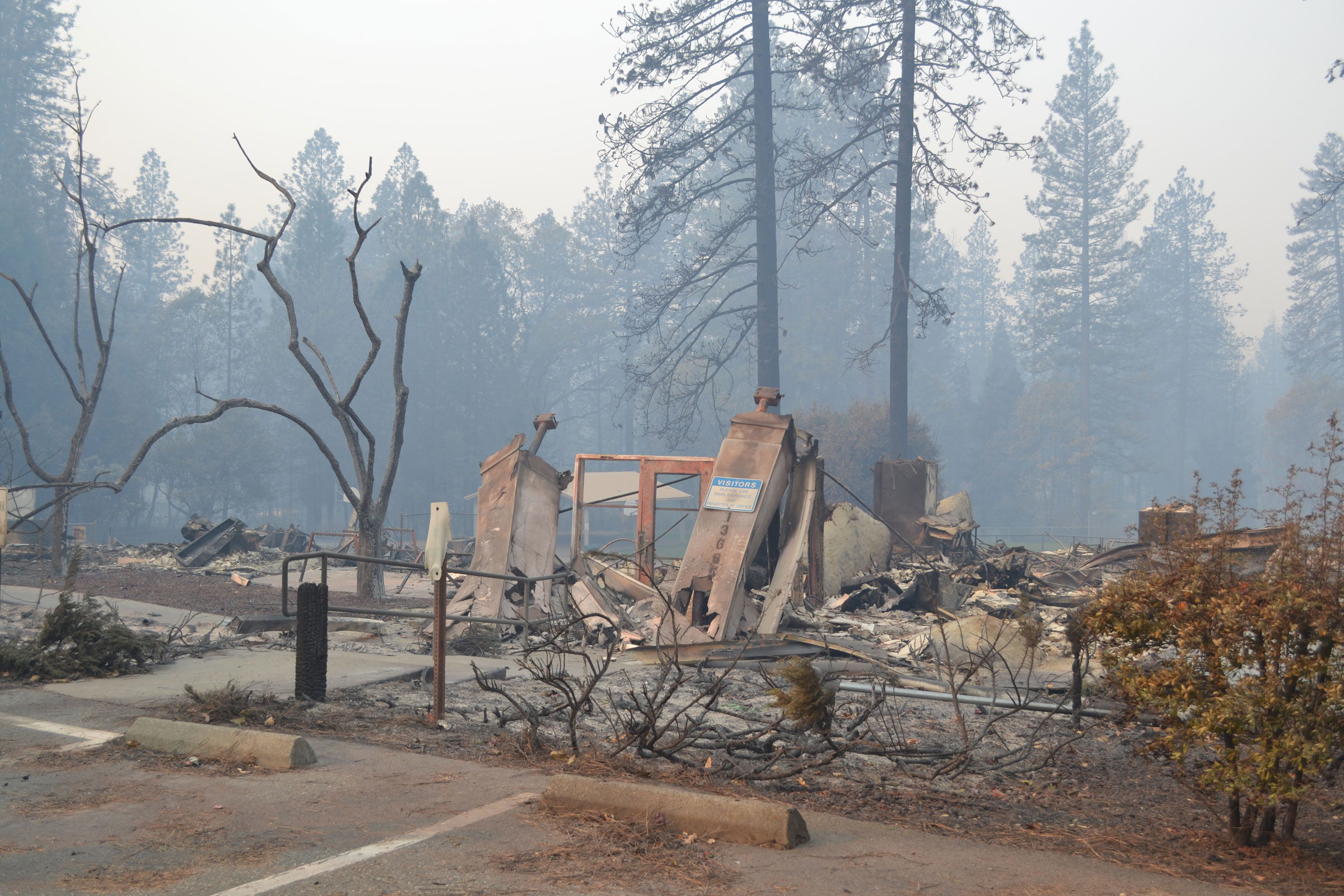
The remnants of Ridgeview High School following the Camp Fire. Photo courtesy of Studio W Architects
How Do You Build for the Future?
The master plan for Paradise Unified School District looks very different now. Much of the area’s population has not returned after the fire, so that means less students. We took a different approach to the revised master plan because of these changed demographics. The focus now isn’t rebuilding what they lost, though there’s a little of that, but more about how we can attract people back to this community. Our focus has changed from maintaining and serving the previous population to how to attract people to come back. We certainly don’t need the amount of space we had before, for example.
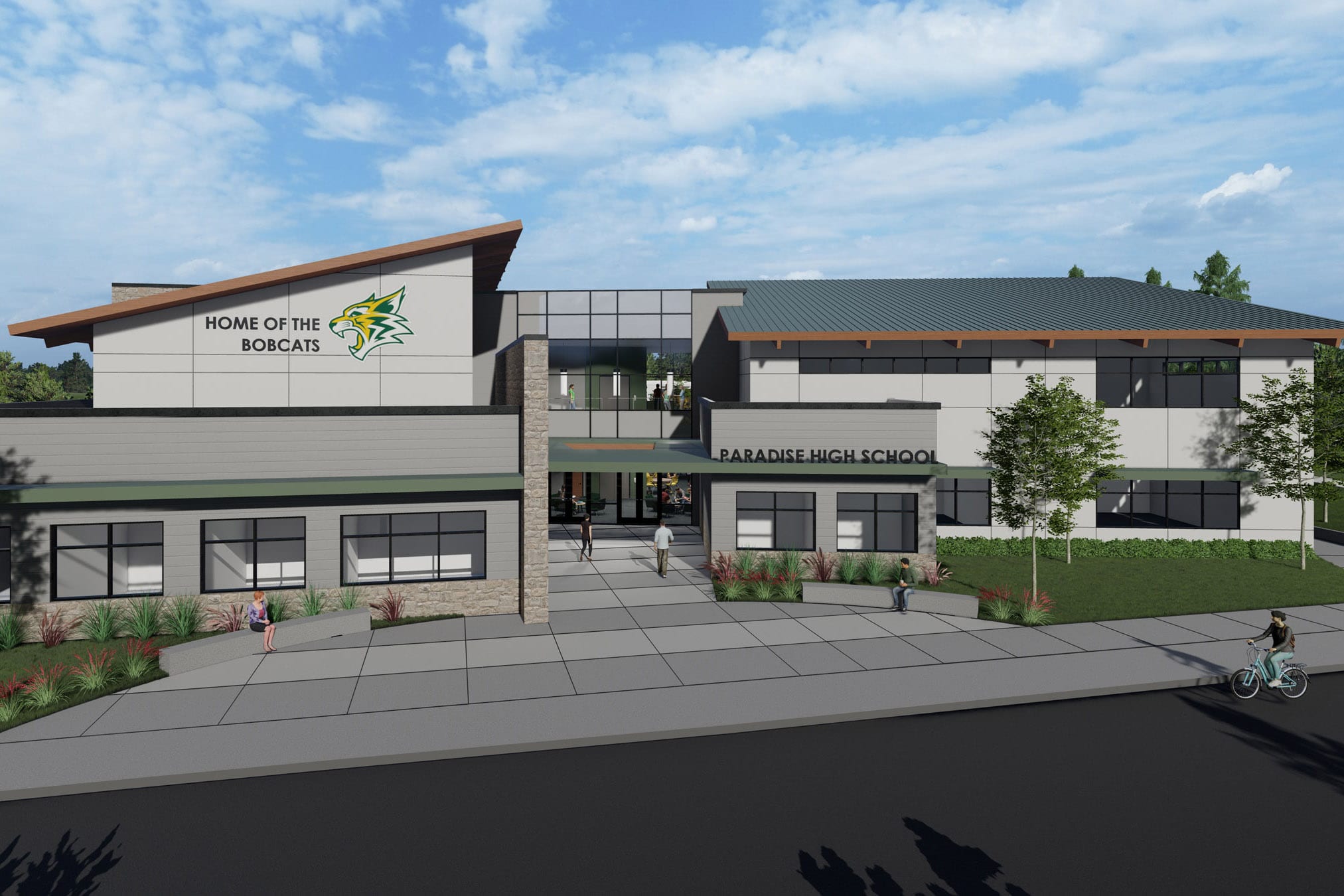
The new Paradise High School Classroom and Administration Facility. Image courtesy of Studio W Architects
In the revised plan we are focusing on the high school because everybody in that community goes to one high school. We want to make that a truly globally competitive high school with technologically advanced educational environments, career tech education, STEM spaces, visual performing arts, a lot of things they didn’t have before and, quite honestly, they didn’t have the money with the bond funds to do what they’re looking at doing now. Now we have the ability to enhance the facilities and take the district to a new level.
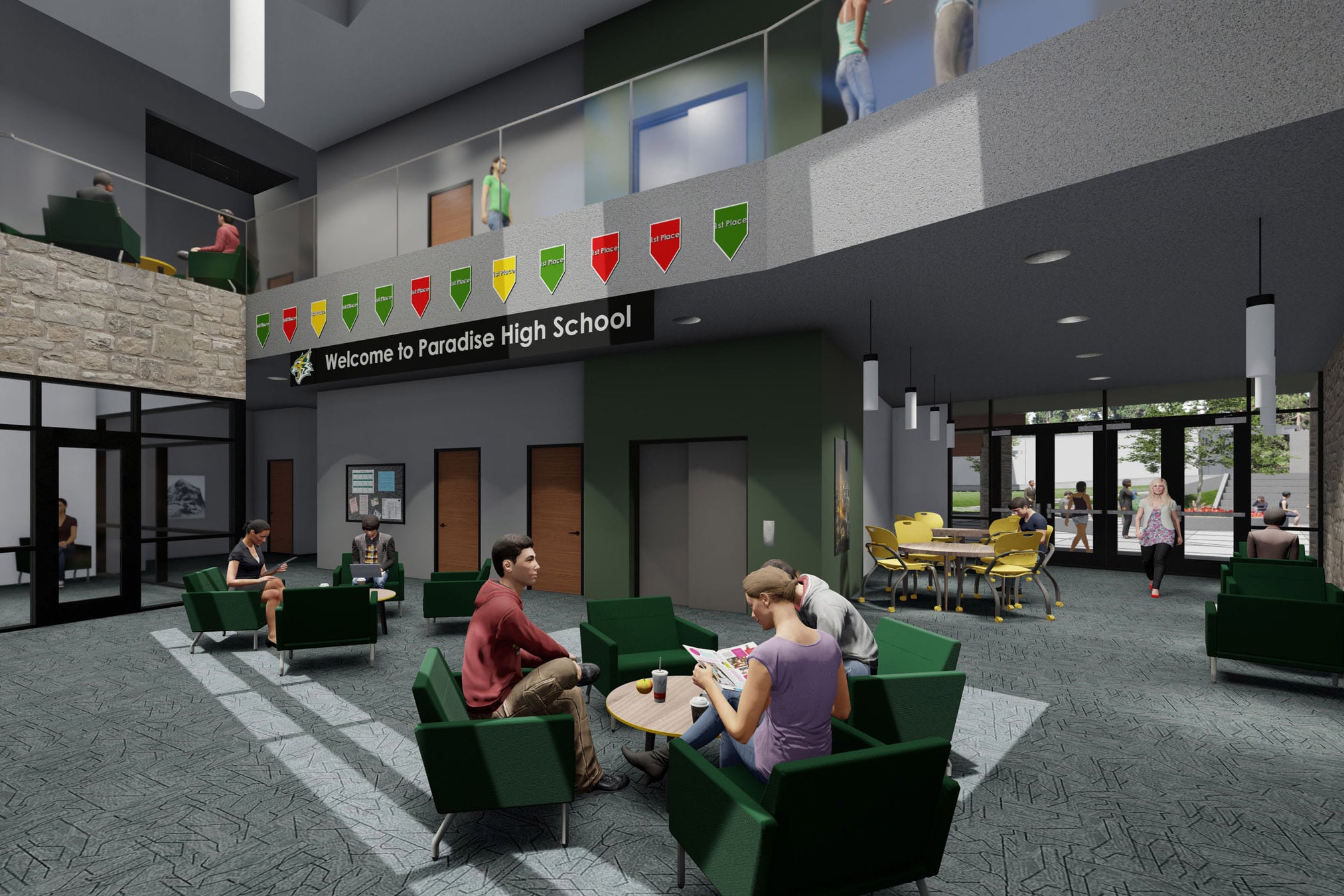
The interior of Paradise High School’s new student center. Image courtesy of Studio W Architects
The revised master plan has been adopted, the initial funds from the insurance proceeds have been secured, and we are in the design process now for several projects. A lot of that will go toward construction-related costs, design fees, plan check fees, and other elements, but we have a $42 million construction program that begins this summer and continues through 2023.
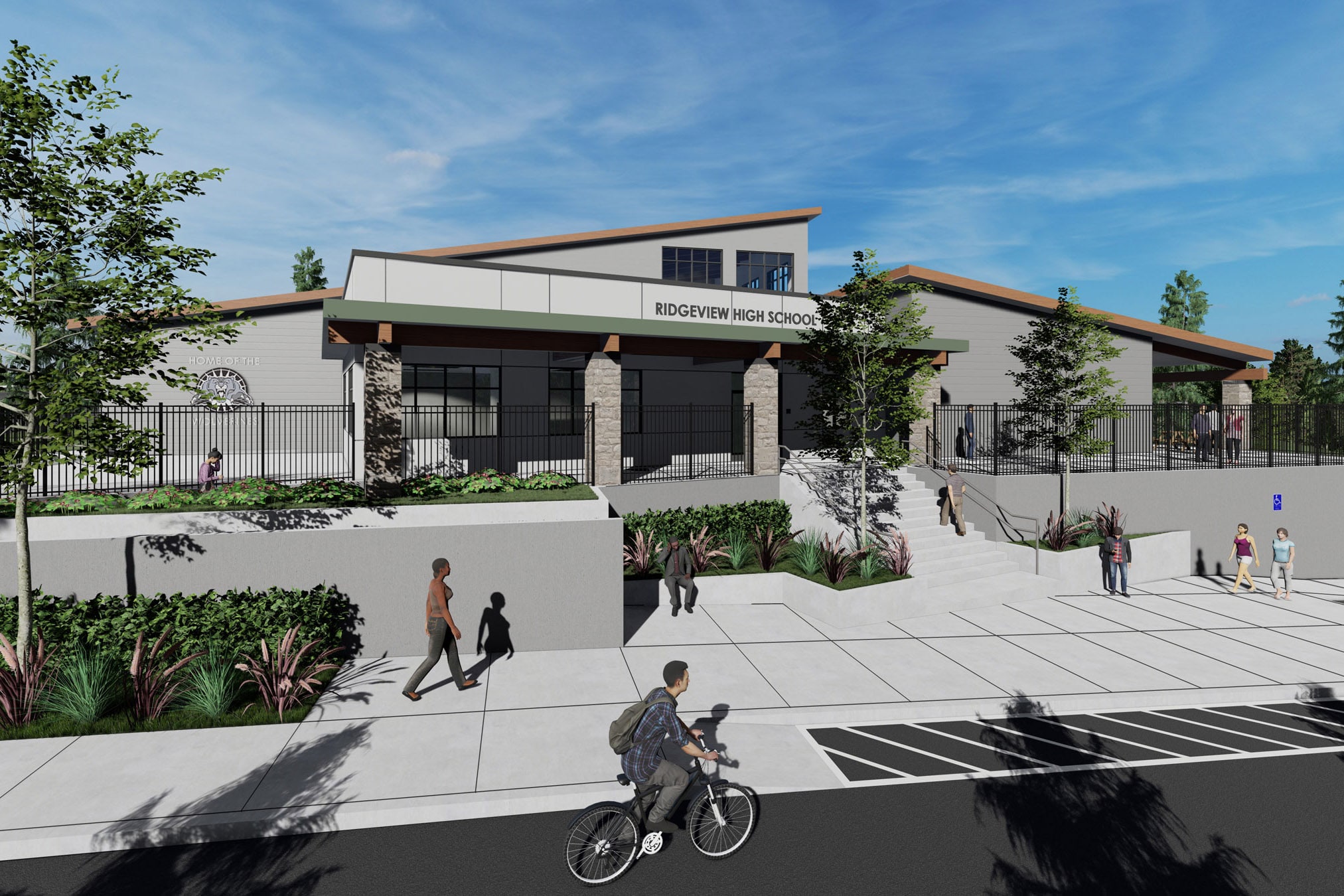
The new Ridgeview High School Facility. Image courtesy of Studio W Architects
What Will the New Paradise Unified School District Look Like?
The high school will receive all new classroom facilities. We will provide a new multistory classroom facility and administration building. We’re replacing their entire career technical education program, or CTE program, which includes agriculture, construction, culinary, and EMS education. And all of their science labs will be modernized. We’re updating their library space and their gymnasium. The high school will be completely transformed.
We are also replacing the continuation high school, which was destroyed in the fire, bringing it closer to the high school by utilizing land that the high school owns.
We will also build a new multipurpose and administrative building for one of the elementary school sites that was compromised in the fire.
We are rebuilding maintenance and operation facilities, and we have new athletic facilities and a lot of modernization and beautification across the district as well as some accessibility improvements.
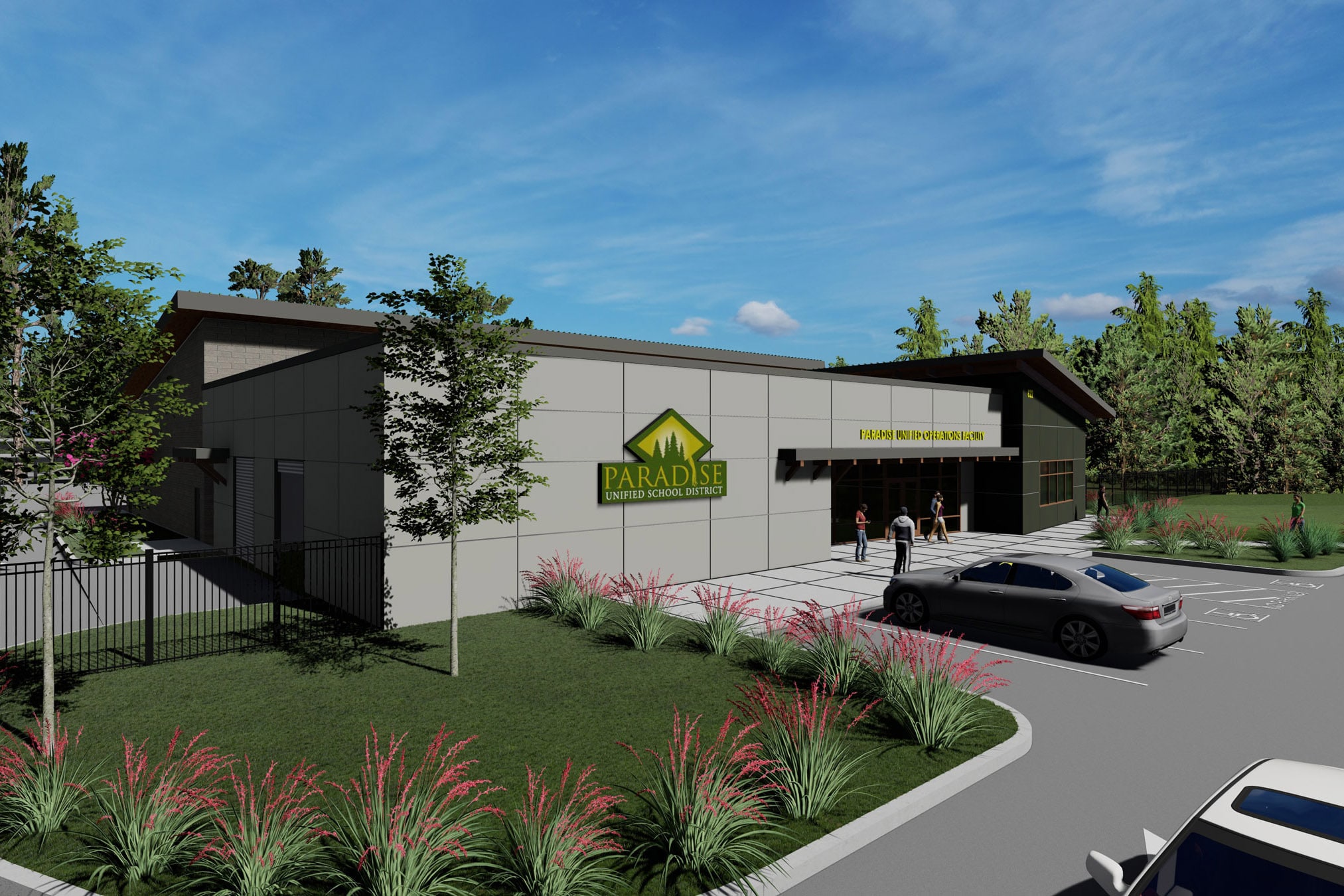
The Paradise Unified School District maintenance and operations facility. Image courtesy of Studio W Architects
Improving Design, District-Wide
With the new plan we wanted the district to feel more cohesive, since previously many sites were built in many different times, from the ’60s to the ’80s to the ’90s.
We also had to look at the demographics. What type of spaces will future students and staff need? What properties will they ultimately use?
This gave us an opportunity to look at everything from a high level and think about how the design can be cohesive in terms of material use and architectural vocabulary. The district wanted it to look very modern while still having that mountain architecture style. We’re designing a timber environment with sloped roofs and a contemporary look. We’re giving them a consistent identity across the district.
Beyond aesthetics, though, we learned a lot of lessons from the fire, and we’re building in those improvements, like fire suppression. We’re looking at fire-resistant construction, CMU (concrete masonry unit) construction, metal framing, exposed metal versus exposed wood, cementitious siding instead of true wood siding, metal roofing, fire sprinklers, and so much more.
Rolling blackouts are another challenge the district faces, usually in the fall. After a very dry summer the utility company will often shut down power and they could go weeks without it. We helped the district negotiate a federal grant so each site will have a power generator to keep a certain number of facilities up and running even during a blackout.
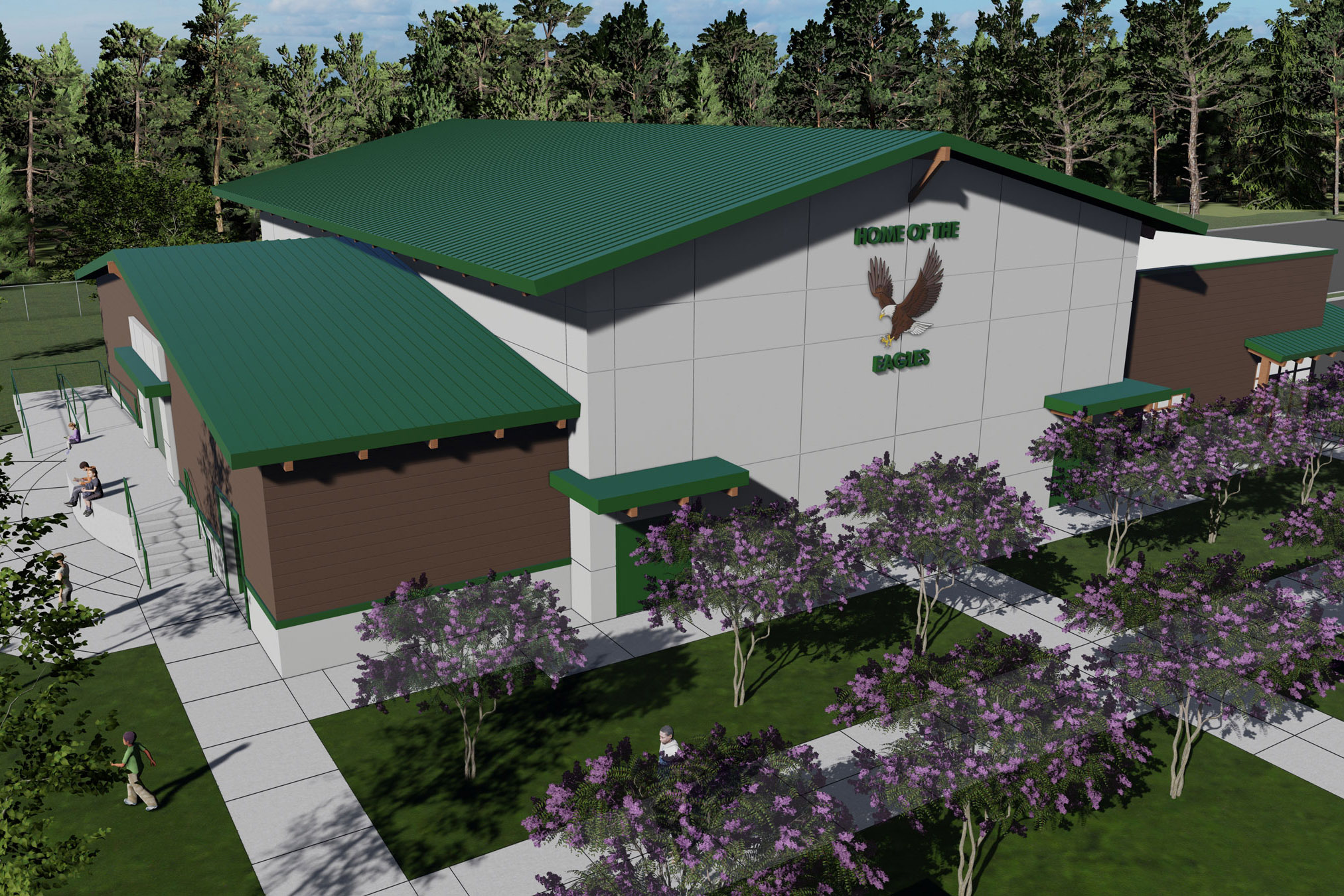
The new Ponderosa Elementary School multi-purpose and administration facility. Image courtesy of Studio W Architects
What Can Others Learn From This Disaster?
Being as prepared as possible for disasters or tragedy applies to so many areas—fire, earthquakes, natural disasters, COVID. How can we be better prepared so that, at a moment’s notice, we can still educate people?
It’s always good for a district to have some inventory of their spaces—a conditions assessment or a master plan that records these things so you have a very strong catalog to show in a negotiation with insurance. Paradise Unified School District was very lucky to have that just by happenstance, as they’d already been working on this. If they hadn’t, they would not have been in such a strong position to negotiate.
It’s important to create a plan that provides a lot of flexibility, too, being able to have a number of different sites in case you need to redistribute a population and so that, in the event of something like a fire, there is a chance that at least some structures may survive. Paradise Unified School District also had a lot of non-permanent structures, which were highly susceptible to fire compared to permanent structures. The portables were built out of wood and used beyond their useful life. We’re replacing those.
Above All, Think Big
The one thing we often encourage districts to do is to think big—think well beyond the immediate funding and the immediate needs of fixing a leaky roof.
At Studio W we have what we call our visionary meeting, which allows the client to imagine what the future could look like, and then we figure out how to make that happen. We ask who they want to be and what they want their facilities to look like. It gave Paradise Unified School District an opportunity to make their dreams come true.
One of the great things that has happened out of a bad situation is that they are now able to bring some of those visionary ideas to life. If they hadn’t thought about that initially, I don’t think they would be well prepared to pursue this capital program under these circumstances. So many of us live within our means, but you have to think beyond your means and beyond yourself. We’re making decisions for facilities that are going to last for another 50 or 70 years.


